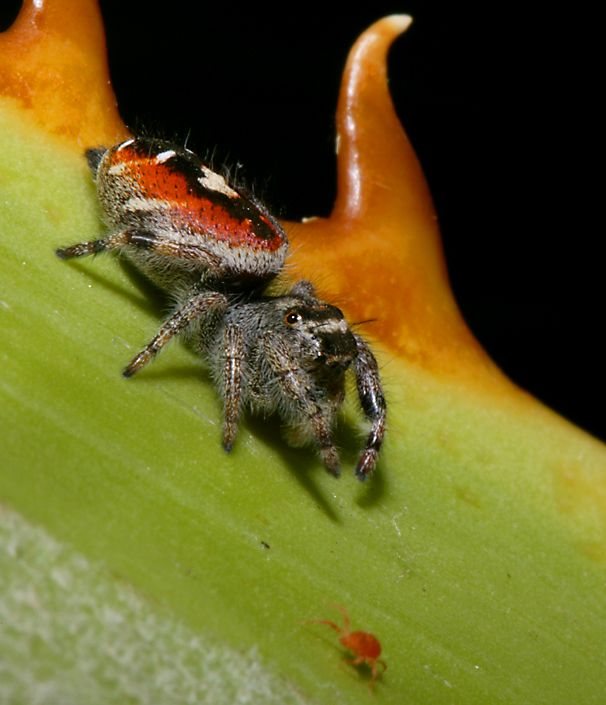Ive seen them twice here in Burbank, CA. The first one crawled out from behind one of our instruments one day during one of our flights. It decided to show itself right before the Final Approach Fix during an approach with one my Captain trainees...it totally threw him off.

Its not the best pic, I'll add others as I find them.
Edit: here is another pic thats looks like it may be the same species...though I thought it had a bit more cream color on the abdomen pattern.

Its about 1/2 inch long, light grey with dark speckles/stripes on its legs and cephlathorax. It has dark iridescent green and blue on its chelicerae.
Its an absolutly gorgeous species...Im hoping to collect one next spring if I can...its getting it past my wife thats going to be hard.

Its not the best pic, I'll add others as I find them.
Edit: here is another pic thats looks like it may be the same species...though I thought it had a bit more cream color on the abdomen pattern.

Its about 1/2 inch long, light grey with dark speckles/stripes on its legs and cephlathorax. It has dark iridescent green and blue on its chelicerae.
Its an absolutly gorgeous species...Im hoping to collect one next spring if I can...its getting it past my wife thats going to be hard.
Last edited:
